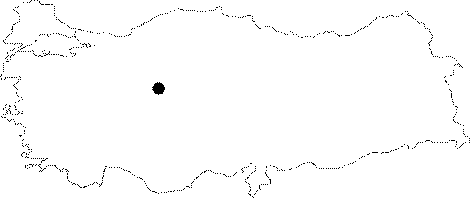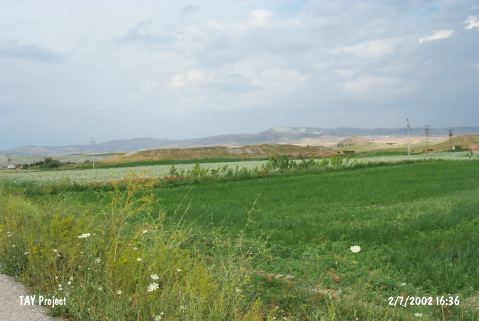|
©The Archaeological Settlements of Turkey - TAY Project
|
|
|
|
|
|
Yassi Höyük / Gordion |
|
|
For site maps and drawings please click on the picture...  |
For photographs please click on the photo...  |
|
Type:
|
Mound |
|
Altitude:
|
700 m |
|
Region:
|
Central Anatolia |
|
Province:
|
Ankara |
|
District:
|
Polatli |
|
Village:
|
Yassihöyük |
|
Investigation Method:
|
Excavation |
|
Period:
|
EBA III EBA I |
|
|
|
 |
|
| Location: It is located next to the Yassihöyük Village; north of the Polatli District; west of Ankara Province. The cemetery of the second millennium BC lies immediate southeast of the village. |
| Geography and Environment: It is located on the eastern side of the Sakarya River. It is one of the biggest mounds in this region. It is considered as the ancient Gordion settlement of the Phrygian Period together with the settlements in the vicinity. The ridges on the south house tumuli. The area between tumulus H and I on the first ridge; east of the river; some 850 km northeast of the mound was employed as a cemetery. |
| History: |
| Research and Excavation: During the earlier excavation conducted by A. Körte; prehistoric remains were not identified. From 1949 to 1967 excavations was conducted under the directory of R. Young. Following Young, K. de Vries led the excavations from 1968 to 1987. K. Sams took over in 1988 and remained as the site director until 2012. Between 2007 and 2013, the excavations at Gordion were suspended due to preparations for the publication. Excavations started again in 2013 with C.B. Rose as the site director. Gordion is included in the registered archaeological sites list prepared by the Ministry of Culture and Tourism. |
| Stratigraphy: The northern trench yielded an indefinite stratification of Yassihöyük. As the water table was reached below the EBA level at 2 m depth; the excavation was terminated. Layer I: Hellenistic Period Layer II: 5th century BC Layer III: Iron Age (Phyrgian Period) Layer IV: Iron Age (Phyrgian Period) Layer V: Late Hittite Period Layer VI: EBA III The recent excavations stratigraphy starts from Late Bronze Age. A a result of the recent studies on the stratigraphy of Gordion as follows [http://sites.museum.upenn.edu/gordion/tr/tarih/kronoloji/, 11.5.2016, 17:30]: 0: Modern (1920s) 1: Middle Age (10th-15th century AD) 2: Roman Period (1st century BC-4th century AD) 3A: Late Hellenistic Period (260 (?)-100 BC) 3B: Early Hellenistic Period (330-260 (?) BC) 4: Late Phrygian Period (540-330 BC) 5: Middle Phrygian Period (800-540 BC) 6A-B: Early Phrygian Period (900-800 BC) 7: Early IA (1100-900 BC) 9-8: LBA (1400-1200 BC) 10: MBA (1600-1400 BC) |
| Small Finds: Architecture: Bronze Age of Gordion is little known due to the buildings of IA in the upper level. The settlement was inhabited around 2500 BC. The majority of the remains of Bronze Age were obtained from three deep soundings in the Citadel Mound and the necropolis at the northeast border of the mound. Therefore, it is not yet known the layout of EBA settlement. During the studies, the remains of mudbrick walled buildings with stone foundation were exposed [http://sites.museum.upenn.edu/gordion/tr/tarih/bronz-cag-gordion/, 11.5.2016, 17:30]. Pottery: Layer VI dated to EBA III yielded a scoop and a small spouted pitcher of the red burnished ware. Human Remains: A grave dated to EBA I was uncovered by coincidence during the excavation of the tumulus under tumulus F. Some of the simple pit burials on the southern part of the partly damaged cemetery dating from the second millennium BC between the two tumuli on the east are claimed to be dated from the end of the third millennium BC. |
| Remains: |
| Interpretation and Dating: The prehistoric finds of Yassi Höyük were not considered important since the excavations were mainly concentrated on the Phrygian Period which has a significant city. The presence of a grave probably dating from the EBA I in the vicinity brings the possibility of the dating going back to the beginning of the third millennium BC. The trench aiming at identifying the stratification certainly yielded EBA III. Depending on some pottery finds comparable with the finds of Troy II; it is suggested that the first settlement started at the end of EBA II; EBA IIIa. |